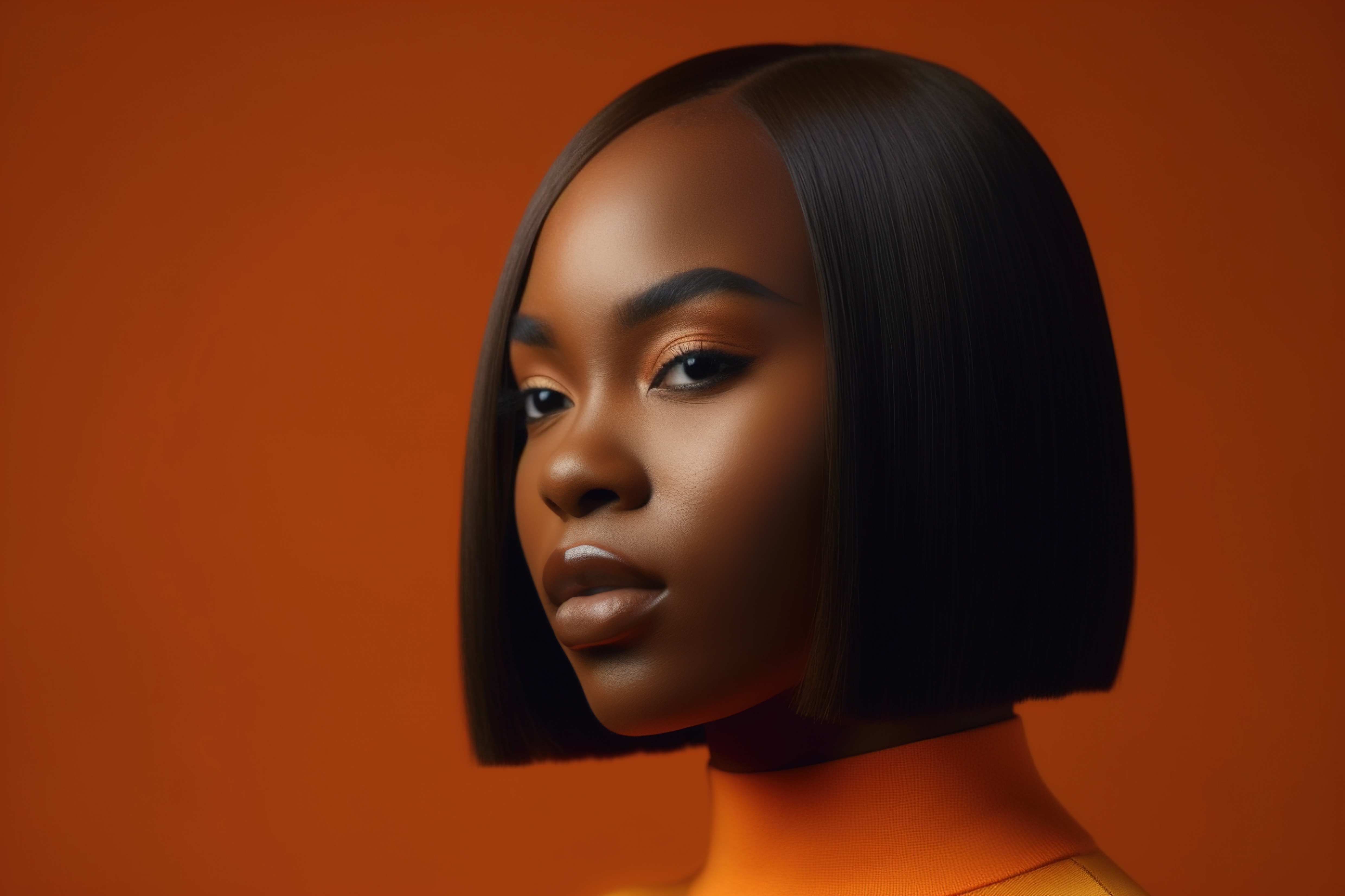Black women are eagerly embracing the straight, sleek bob. But how will the proposed keratin ban impact our ability to rock that style in the future? Crystal Aguh, MD, FAAD, an Associate Professor of Dermatology and Director of the Ethnic Skin Program at Johns Hopkins School of Medicine, and Erin H. Maybin, a licensed cosmetologist, educator, and advocate who sits on the New York State Appearance Committee break down what the ban is, what treatments are impacted, and what your options are if you want to wear your hair straight.
What exactly is being proposed?
In an Instagram post, FDA Chief Scientist Namandjé N. Bumpus, Ph.D., explained that the agency plans to propose a rule to remove formaldehyde and formaldehyde-releasing chemicals as ingredients in hair straightening products. Dr. Aguh, who specializes in our hair and scalp conditions, says, “This ban includes keratin and keratin-like treatments. It does not include conventional hair relaxers.” She further explains that the FDA is using these terms because brands may call the treatments different names and tout them as formaldehyde-free, but they can still release the gas when combined with heat.
While some in our community have relied on relaxers, others switched to keratin treatments, sometimes referred to as Brazilian blowouts, because they believed that they were safer. But, apparently, that is not the case for us as clients or for the hairstylist performing the service, who is exposed to these ingredients.
What is the difference between a keratin treatment, a texturizer, and a relaxer?
“Keratin treatments results are semi-permanent and last for a few weeks.” Aguh says. In addition to being a board-certified specialist, she is a member of the Skin of Color Society, which promotes the awareness of, and excellence within, skin of color dermatology.
“Formaldehyde, when mixed with liquid keratin, can link with the keratin in our hair shaft and lock into a straight formation with it is activated with a heat source like a flat iron.”
Relaxers permanently break down the disulfide bonds of the hair whether they use sodium hydroxide (lye) or lithium, potassium, or guanidiine hydroxide (no lye), according to Erin H. Maybin, Executive Vice President of Education Development and co-founder of the Natural Hairstyle & Braid Coalition. “Texturizers are the use of a ‘mild relaxer’ applied to the hair (typically done to define curls, omit frizz, and create a curly hair look) combed through the hair for a short period of time to not break down the bonds of the hair completely like a traditional relaxer.”
But traditional relaxers have issues of their own. More than 7,000 lawsuits have been filed claiming the chemical service caused cancer, according to Reuters.
Why is formaldehyde dangerous?
According to Dr. Aguh, “The data linking formaldehyde to cancer is indisputable, and it is unfortunate that, despite this large body of evidence, it has continued to find its way into our hair and skin products.” She points out that the ban is long overdue. Can you believe The New York Times reported that the FDA acknowledged the ingredient was unsafe as early as 2016, yet the ban never happened?
What changed?
Black women took action. According to CNN, Representatives Ayanna Pressley and Shontell Brown wrote to the FDA Commission, Dr. Robert Califf, asking for an investigation into hair straighteners’ link to cancer. And Dr. Bumpus started leading the FDA’s efforts in the cosmetics category in February. One of the things she was interested in was health disparities and using science to improve everyone’s overall health. But she also wanted to consider “the diverse cultural needs in the development and marketing of FDA-regulated products, including cosmetics.”
Bumpus points out that these formaldehyde-producing products are often marketed to us. When combined with heat, the risks of upper respiratory tract cancers and myleoid lukemia increase. She found that unacceptable.
But this proposed ban is in the early stages, and there will be hearings and hurdles to overcome before anything is final.
Is a silk press a better option if I still want to wear a straight style?
Well, it depends. Maybin points out that when done correctly, the straightening technique will have you looking fly. But the con is if you have silk presses done too often, it may cause mechanical damage that can only be remedied by cutting your hair. “Mechanical damage happens when too much heat is applied to the hair in one sitting or over time through multi-pass straightening or a setting that is too high.” She also cautions that heat level adjustment may also be needed around the hairline.
Maybin says the key to keeping your healthy is in your blowdrying technique:
- Use a concentrator to control the airflow.
- Make sure the heat runs parallel to the hair shaft.
- Start at the roots, move to the mid-shaft, and do your ends last. (Your ends are very fragile, and it is also the place where damage starts).
- When using a flatiron on your hair, divide it into 1/4″ sections and do the one-pass method.
Maybin points out that the technology of your tools is critical. Her choices are tools from Ergo and FHI. Your tools may be the difference between maintaining healthy hair and damaging it. But proper maintenance must also include regular trims.
What are my styling options if I want to grow the keratin out?
“I have a client who is currently embracing her natural hair and growing out her keratin treatment,” Maybin says. “We gently blow her hair, smooth it out with a flatiron, or sometimes curl it. The heat is few and far between because we don’t want to damage her newly embraced hair.” Other styling options include braids, twists, or faux loc extensions.
The bottom line: yes, you can still rock your straight bob but be aware of the risks with chemical straighteners, be aware of the temperature and frequency associated with your heat tools and get regular trims.






